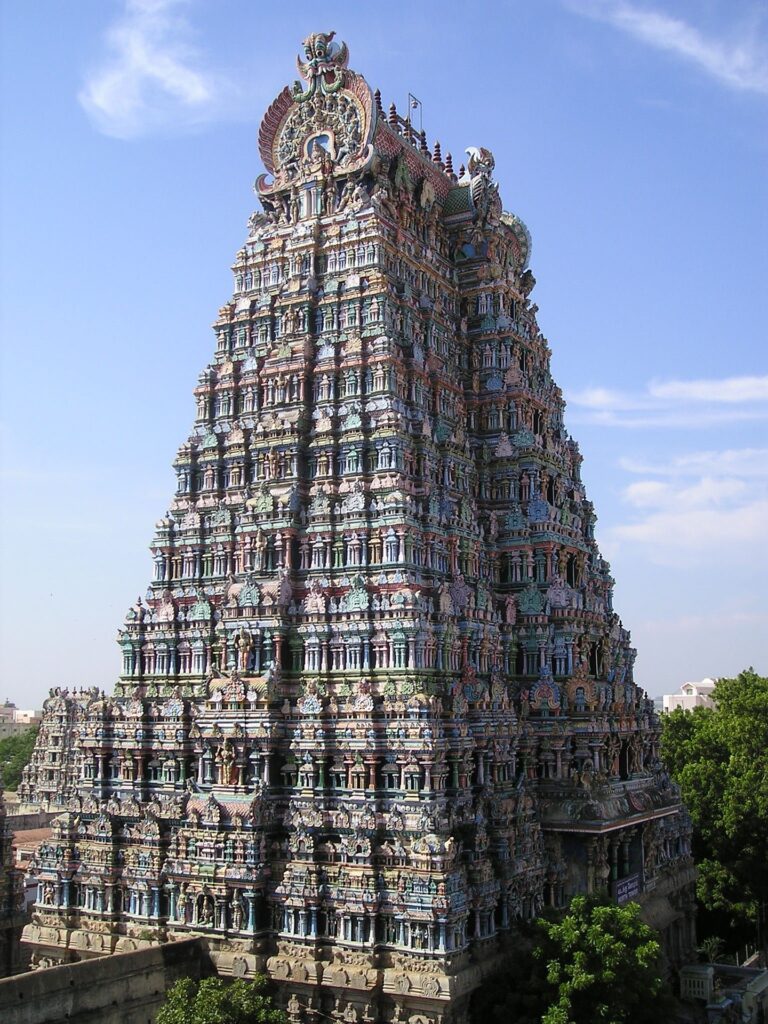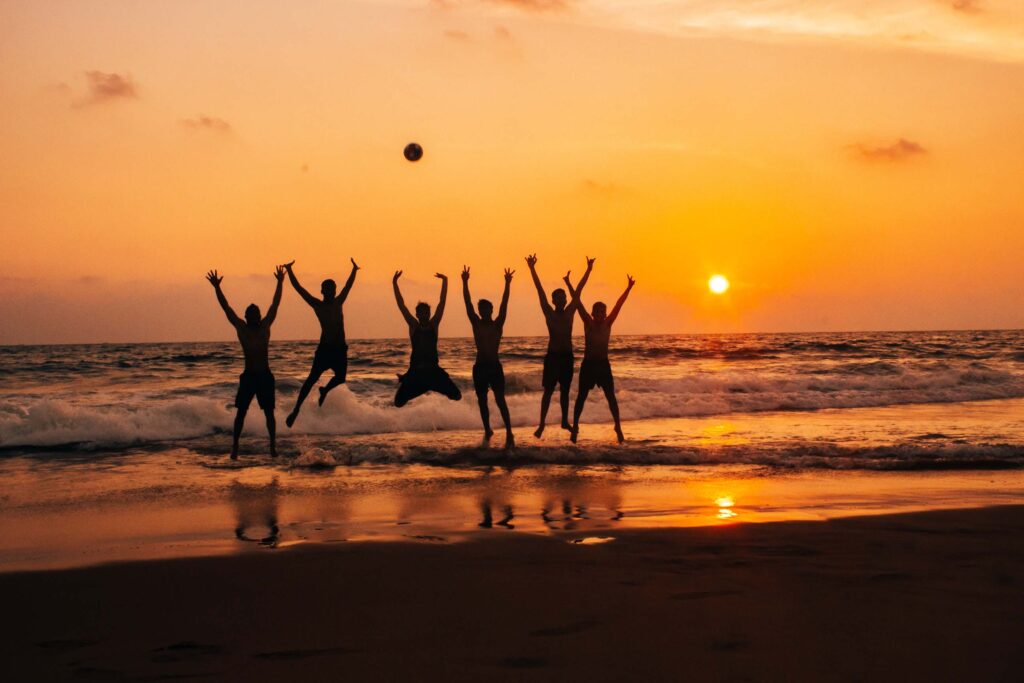type=”text/javascript”>
Overview
Spirituality is the base of Indian culture and our belief make it more definite. As north India is famous for many temples perched on the high Himalayan mountains and in the South the temple are just spellbound with their extraordinary architectures. This tour will dwell you in South India spirituality. The tour starts from Madurai which is the cultural capital of Tamil Nadu. The skyline of Madurai is dominated by the 14 colourful gopurams (gateway towers) of Meenakshi Amman Temple. Covered in bright carvings of Hindu gods. Followed by Rameshwaram which is known for Ramanathaswamy Temple, a Hindu pilgrimage site with ornate corridors, huge sculpted pillars and sacred water tanks. After Rameshawaram drive to Kanyakumari which is the southernmost point and the meeting point of three oceans-the Bay of Bengal, the Arabian Sea and the Indian Ocean. Besides its importance as a Hindu pilgrim center, it is famous for its beautiful views of sunrise and sunset over the waters of India Kanyakumari. Kovalam is the place to relax and to lost in the natural beauty and self-realization. Kovalam is a place where you can relax. The tour ends in the big city of Thiruvananthapuram where you will enjoy all the amenities of visiting some places and relax before departing home.
Highlights
- Madurai
- Rameswaram
- Kanaykumari
- Kovalam
- Thiruvananthapuram
Itinerary
Arrival Madurai, upon arrival at the Airport or Railway station transfer direct to the hotel. Later visit Madurai Meenakshi Temple, Chokanadhar Temple, Alagar Temple, and Lord Muruga Temple.
Madurai - situated on the banks of the holy River Vaigai, the town of Madurai owes its popularity to a junction of ancient temples and shrines that truly exhibit its spiritual wealth and past glory. The religious sites in Madurai attract several visitors to this historical city every year from all over the country who is intrigued by its brilliant architecture and divine charm. Being a religiously rich city, it is attended to regularly by travellers. The place is famed for housing the magnificent Meenakshi Amman Temple, which is one the most prominent religious sanctuaries among all Hindu shrines.
After the visit, drive back to the Hotel.
Overnight at the hotel
After breakfast, 3.5 hours drive bring you to Rameshwaram. Upon arrival transfer to the Hotel. Later explore the temples of Rameshwaram.
Rameswaram means "Lord of Rama". The Ramanathaswamy Temple is the most notable historic landmark of the town. Located in the centre of town, Ramanathaswamy Temple is a famous Hindu temple dedicated to the god Shiva. The temple is one of the 12 Jyotirlinga shrines, where Shiva is worshipped in the form of a Jyotirlinga meaning "pillar of light". Rameshwaram is where the Vanar Sena began to build the Ram Setu to reach Lanka
You will visit the renowned temple of Rameshwaram which is as follows:
Sri Ramanathaswamy Temple - The Sri Ramanathaswamy Temple in Rameshwaram is renowned for the collection of Shivling it houses. The temple also happens to be one of the few temples in India that is built entirely in the Dravidian architectural style.
Kothandaramaswamy Temple - The temple is situated in Dhanushkodi in Rameshwaram and is surrounded by a beautiful beach. The temple is located on a site that is mentioned in the Ramayana: the resting spot for Lord Rama as he was marching to Lanka.
The temple houses idols of Lord Rama, Lakshmana and Sita. It is believed to be the final resting spot of Vibhishana, the younger brother of Ravana who met his end at the hands of Lord Rama.
Panchamukhi Temple - The Panchamukhi Temple is known for housing the five-faced idol of Lord Rama. The place is considered very important to any ‘Bal Brahmachari’. The idol is carved entirely out of one large Senthooram stone.
It is said that the stone held more value than gold in ancient times. Besides the idol, the temple also houses stones that were used to build the ‘Ram Setu” a bridge used by Lord Rama and his army to invade Lanka.
Dhanushkodi Temple - The Dhanuskodi Temple is situated in the town of Dhanuskodi, close by to Rameshwaram. The temple now lies in a state of ruin but offers a beautiful view of the horizon.
The temple held great importance in its time and has been mentioned throughout the Ramayana. This place rewards you with great scenery and tranquillity.
Gandhamadhana Parvatham Temple - Gandhamadhana Parvatham Temple is located on a mountain near Rameshwaram. This mountain is said to be the place Rama sent Hanuman to get medicinal herbs required to save Laxman’s life. According to legend, Hanuman then carried the mountain to its current spot.
On top of the mountain lies the temple that is said to have the imprints of Lord Rama’s feet. The temple is located 3 kilometres from Rameshwaram and is said to be the highest viewing point in Rameshwaram.
Later drive back to hotel
Meals – B
Overnight at the hotel
A long day, today the drive is around 06 hours. Upon arrival transfer to the hotel.
Kanyakumari is the southernmost point of peninsular India and the meeting point of three oceans-the Bay of Bengal, the Arabian Sea and the Indian Ocean. Besides its importance as a Hindu pilgrim centre, it is famous for its beautiful views of sunrise and sunset over the waters. The place derives its name from the goddess Kanya Kumari, considered to be the sister of Krishna, a goddess is believed to remove the rigidity from the mind, to whom women pray for marriage.
Later visit the places such as:
Vivekananda Rock - Vivekananda Rock Memorial attracts the large number of tourists. As its name implies, it is essentially a sacred monument, built by the Vivekananda Rock Memorial Committee to commemorate the visit of Swamy Vivekananda to “Shripada Parai” during 24th, 25th and 26th December 1892 for deep meditation and enlightenment.
From very ancient times, the rock has been regarded as a sacred place. In Puranic tradition, it has been known as “Sripada Parai: meaning the rock, which has been blessed by the touch of Shripada feet of the Goddess. On the rock, is a projection similar in form to a human fort and a little brownish in complexion, which has traditionally, been revered as a symbol of Shripadam. According to legend, it was on this rock that Goddess Kanniyakumari did Tapas.
Tiruvalluvar Statue - The Thiruvalluvar Statue, or the Valluvar Statue, is a 41-metre-tall stone sculpture of the Tamil poet and philosopher Valluvar, author of the Tirukkural, an ancient Tamil work on Dharmic and morality.
After spending some time at the beach and relish the splendid view of the sunset, later drive back to the hotel.
Meals – B
Overnight at the Hotel
After leisurely breakfast, 2.5 hours drive to Kovalam. Those who want to experience the sunrise can book a taxi from the hotel and come back for the breakfast.
Kovalam is an internationally renowned beach with three adjacent crescent beaches. It has been a favourite haunt of tourists since the 1930s. A massive rocky promontory on the beach has created a beautiful bay of calm waters ideal for sea bathing. Besides it also attracts tourist from all over the world for recreation activities such as sunbathing, swimming, herbal body toning massages, special cultural programmes and catamaran cruising are some of them.
The whole day is for leisure. Later in the afternoon back to the hotel.
Meals – B
Overnight at the Hotel
After breakfast, 30 minutes drive to the capital of Kerala – Thiruvananthapuram for the sightseeing. This includes:
Sri Padmanabha Swami Temple premises: The Padmanabha Swamy Temple is one of the most important temples in the world. This temple is one of the oldest temples in India and is of vast mythological significance too as it is one of those temples that belong to the 108 Divya Desams, that is, divine temples dedicated to the incarnations of the Lord Vishnu. This temple is very strict in its rituals and pilgrims are mandated to abide by the rules and regulations of this temple. Unfortunately, this grand abode of Lord Vishnu is open only to the Hindu pilgrims from all over the world who flock to this temple every year with deep reverence in their hearts.
Napier Museum: The Napier Museum is an art and natural history museum situated in Thiruvananthapuram, India. The architecture of the museum is a mix of Indian, Chinese, Kerala, and Mughal styles. The Museum grounds also hold the famous Trivandrum Zoo, which is one of the oldest zoological gardens in India
Sri Chithira Art Gallery: The Sri Chitralayam, popularly known as Sri Chitra Art Gallery, was opened to the public by the erstwhile Maharaja of Travancore Sri Chitra Thirunal on the 25th of September 1935 for the enjoyment, education and development of the artistic taste of the people. It has a collection of paintings representing the various genres of paintings in India, along with a few from other parts of Asia with a distinct stamp of Indian culture.
Kuthiramalika Museum: 122 smiling wooden horses await all who visit ‘Kuthiramalika’, which means “palace of horses”. Formally known as Kuthiramalika Palace Museum or Puthenmalika Palace Museum, it is a pristine two-storied palace near the Sree Padmanabhaswamy Temple in Thiruvananthapuram. Built by Swathi Thirunal Balarama Varma, who was Maharaja of the Kingdom of Travancore in British India, it takes one back to the 1840s when it was first constructed. It is a great example of the Kerala school of architecture and is made from teakwood, rosewood, marble, and granite. The museum houses idols and sculptures made from white marble, Kathakali figures, Belgian mirrors and paintings. The flourishing spice trade between Kerala and the world made it possible to obtain those items. Later drive back to Kovalam.
Meals – B
Overnight at the Hotel
Drive to Thiruvananthapuram and drive to the Airport or Railway station. After giving the departure our services will end.
Meals – B
Inclusions / Exclusions
Inclusions:
- Accommodation on Double sharing basis at the hotel/Resort specified /Similar.
- Daily breakfast as per tour.
- All tours and transfers as stated in private air-conditioned vehicle.
- Our Professional charges
Exclusions:
- Airfare (Please refer to Airfare Supplement)
- Guide/Escort
- Any entrance fee
- Camera / video camera fees inside the monuments
- Travel insurance
- Tipping for driver and guide.
- Beverages and any expenditure of personal nature.
- Any other service, which has not mentioned above.








